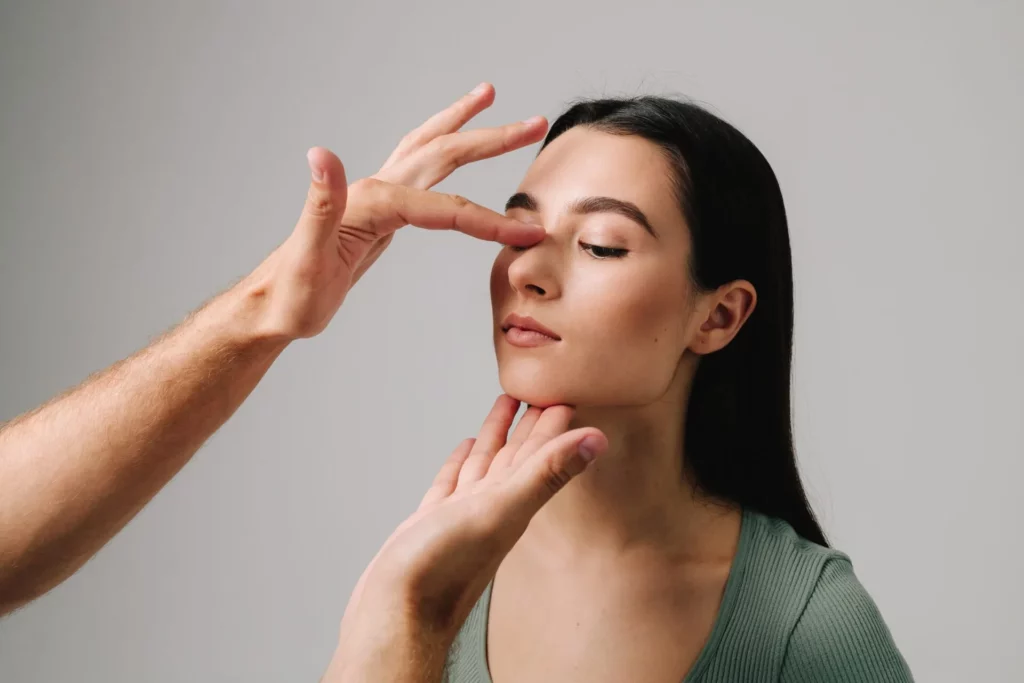Can Rhinoplasty Help With Sinus Problems?

Connection Between Nose Structure and Sinus Health
The sinuses are hollow cavities in your skull that are connected to your nasal passages through small openings. When these passages function properly, mucus drains naturally, and air circulates freely. However, structural abnormalities in the nose can block these drainage pathways, creating the perfect environment for bacterial growth, inflammation, and chronic discomfort.
Many people suffer for years with what they assume are simple sinus infections or allergies, never realizing that the root cause might be anatomical. This is where understanding the relationship between nose structure and sinus function becomes crucial.
The Impact of a Deviated Septum
Not all rhinoplasty procedures are purely cosmetic. Functional rhinoplasty specifically targets structural issues that impair breathing and sinus drainage while potentially improving appearance as a secondary benefit. This approach recognizes that a beautiful nose that doesn’t work properly fails to serve its primary biological purpose.
The beauty of functional rhinoplasty is that it doesn’t force you to choose between aesthetics and health. Skilled surgeons, such as Dr. Zarrabi, can improve nasal function while creating or maintaining an attractive appearance. For many patients, this dual benefit represents the ideal outcome: breathing easier while feeling more confident about their appearance.
Functional Rhinoplasty: When Form Meets Function
Addressing Chronic Sinusitis Through Surgical Intervention
When chronic sinusitis stems from structural problems rather than infections or allergies alone, rhinoplasty can offer lasting relief. By correcting the anatomical issues that prevent proper drainage and airflow, surgery addresses the root cause rather than just managing symptoms. This can result in fewer infections, reduced reliance on medications, and a significant improvement in daily comfort.
Understanding Endoscopic Sinus Surgery
The advantage of the endoscopic approach is its precision, which results in minimal tissue trauma. Recovery is typically faster than traditional sinus surgery, and the results can be life-changing for people who have struggled with chronic infections and congestion for years.
The Challenge of Chronic Sinus Infections
Living with chronic sinus infections means enduring repeated cycles of illness, antibiotics, and temporary relief followed by recurrence. These infections cause facial pain, thick nasal discharge, congestion, headaches, and exhaustion. Over time, they can impact your ability to work, sleep, and engage in daily activities. While antibiotics and other medications can treat active infections, they don’t address structural problems that allow infections to keep returning. If your infections are linked to poor drainage caused by anatomical issues, rhinoplasty might be the key to breaking the cycle.
By improving sinus drainage and airflow, surgical correction can reduce the frequency and severity of infections. Many patients report that after recovering from rhinoplasty, they experience their first extended period without sinus problems in years.
Dr. Zarrabi's Piezo Ultrasonic Technique
Traditional rhinoplasty often involves breaking and reshaping the nasal bones using manual instruments, which can cause trauma to the surrounding soft tissues, leading to increased swelling, bruising, and a longer recovery time. The piezo ultrasonic device utilizes ultrasonic vibrations to modify bones with extraordinary precision, while leaving soft tissues, such as cartilage, blood vessels, and nerves, untouched.
This advanced capability allows Dr. Zarrabi to perform highly precise bone work during functional rhinoplasty procedures. The benefits are substantial: less trauma results in reduced swelling and bruising, faster recovery, more predictable outcomes, and a decreased risk of complications. For patients undergoing surgery for both functional and aesthetic reasons, this technique can significantly enhance the overall experience.
Relief from Nasal Congestion That Won't Quit
Persistent nasal congestion is one of the most frustrating symptoms for people with structural nasal issues. Unlike temporary congestion from colds or allergies, structural congestion doesn’t respond well to decongestants or antihistamines because the problem isn’t inflammation or infection – it’s anatomy.
When your nasal passages are too narrow, your septum is severely deviated, or your turbinates are enlarged, no amount of medication will create the space needed for proper airflow. This is where rhinoplasty shines. By physically opening the airways and correcting obstructions, surgery provides relief that drugs simply cannot achieve.
Considering Facial Plastic Surgery for More Than Aesthetics
When Nasal Polyps Complicate Matters
When rhinoplasty is performed to address sinus-related issues, Dr. Zarrabi can also address polyps simultaneously, removing obstructions and reshaping nasal structures to prevent future polyp formation. This comprehensive approach addresses both the symptoms and underlying structural contributors to sinus disease.
Overcoming Breathing Problems for Good
Exploring Alternative Treatments Before Surgery
Medication
Balloon Sinuplasty
Making the Decision: Is Rhinoplasty Right for You?
1. Evaluation by a Specialist
2. Consider Your Symptoms
3. Find a Qualified Surgeon
4. Have Realistic Expectations
Remember that rhinoplasty is real surgery with a recovery period and potential complications, though serious problems are rare with experienced surgeons. Most patients find that the temporary inconvenience of recovery is well worth the long-term benefits of improved breathing and reduced sinus problems.
The Path to Nasal Health
Conclusion
When performed using an advanced surgical technique, concurrent rhinoplasty with cosmetic procedures can correct structural issues while also providing cosmetic rhinoplasty benefits. Addressing sinus-related symptoms while considering allergic reactions, potential revision surgery, and the impact on nasal airflow ensures that patients achieve lasting results.